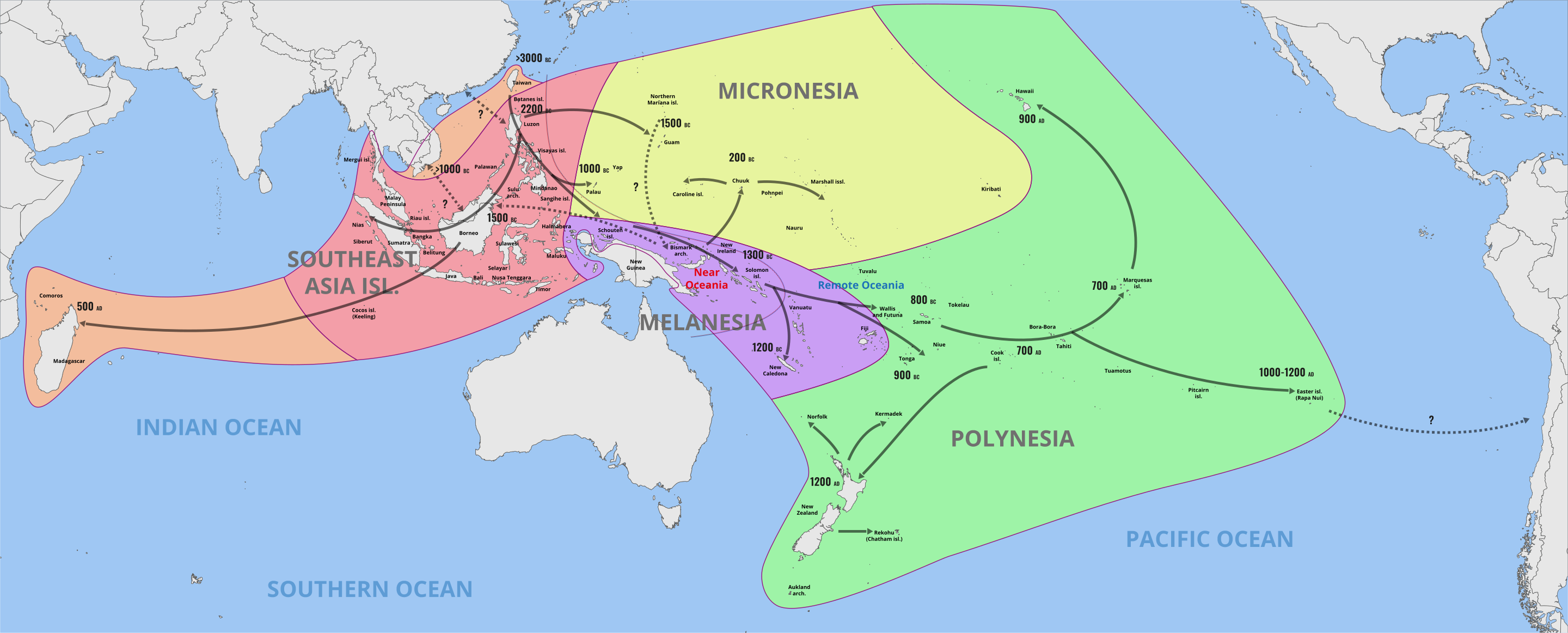Austronesian Language Family Spread Map


Marcus Rodriguez
Historical Geography Expert
Marcus Rodriguez specializes in historical cartography and geographic data analysis. With a background in both history and geography, he brings unique...
Geographic Analysis
What This Map Shows
The "Austronesian Language Family Spread Map" illustrates the vast distribution of Austronesian languages across a diverse range of islands and coastal regions in the Pacific and Indian Oceans. Covering areas from Madagascar to Easter Island, this map highlights the geographical spread of over 1,200 languages that belong to this prolific family. Austronesian languages are not only rich in diversity but also reflect the historical migrations and cultural exchanges that have shaped the peoples of these regions.
Deep Dive into Austronesian Languages
Austronesian languages form one of the largest language families in the world, and their influence stretches across thousands of islands and coastal areas. Interestingly, this family encompasses languages spoken by over 300 million people, making it a significant linguistic group. The languages are categorized into several branches, with the most notable being the Malayo-Polynesian branch, which includes languages like Tagalog, Malay, Hawaiian, and Maori.
The origins of the Austronesian languages are traced back to Taiwan, where the first speakers likely emerged around 3000 BCE. From there, they began a remarkable maritime expansion, reaching the Philippines, Indonesia, and eventually the Pacific Islands. This movement is often referred to as the Austronesian expansion and is noted for its remarkable seafaring and navigation skills. Ever wondered why some of the most remote islands in the Pacific have similar languages? It’s due to these early migrations!
One of the defining features of the Austronesian languages is their rich variety in phonetics and grammatical structures. For instance, while languages like Tagalog utilize a verb-subject-object (VSO) word order, others such as Malagasy adopt a subject-verb-object (SVO) structure. This diversity showcases the adaptability of Austronesian languages to different cultural contexts.
Interestingly, many Austronesian languages also exhibit a high degree of lexical borrowing, often influenced by contact with other language families, such as Papuan and Sino-Tibetan languages. This phenomenon not only enriches the vocabulary but also reflects the historical interactions of the Austronesian-speaking peoples with other cultures.
Regional Analysis
The map presents a clear picture of how Austronesian languages are distributed across various regions. In Southeast Asia, languages such as Javanese and Sundanese dominate the linguistic landscape, spoken by millions in Indonesia. The western Pacific region, including island nations like Fiji and Samoa, showcases a different set of languages, such as Fijian and Samoan, which have distinct linguistic features yet share common roots with other Austronesian languages.
In the remote reaches of the Pacific, languages like Hawaiian and Tahitian reflect the unique adaptations of Austronesian languages to island life. The preservation of these languages is crucial, as many are endangered due to globalization and the dominance of more widely spoken languages like English and French. For instance, Hawaiian has seen a resurgence in recent years, but challenges remain.
Moreover, the languages spoken in Madagascar, such as Malagasy, provide a fascinating case study. Despite being located over 4,000 kilometers away from the Austronesian heartland in Southeast Asia, Malagasy is a direct descendant of the Austronesian language family. This reveals the incredible maritime capabilities of early Austronesian speakers and their ability to traverse vast ocean distances.
Significance and Impact
Understanding the spread of Austronesian languages is more than just a linguistic endeavor; it has significant cultural, historical, and social implications. The migration patterns of Austronesian-speaking peoples have influenced trade networks, cultural exchanges, and the development of unique islander identities. Moreover, as globalization accelerates, many of these languages are at risk of extinction.
The preservation of Austronesian languages is vital for maintaining cultural heritage and identity. Language is not just a means of communication; it encapsulates worldviews, traditions, and histories. Current efforts, such as revitalization programs in places like Hawaii and New Zealand, aim to foster a sense of pride and continuity among younger generations.
Looking forward, the future of Austronesian languages will depend largely on educational initiatives and community engagement. As more people recognize the value of linguistic diversity, there may be hope for the survival of these languages in a rapidly homogenizing world. The Austronesian language family is not just a map on paper; it reflects the journey of humanity across oceans, connecting cultures and histories that continue to evolve today.
Visualization Details
- Published
- October 24, 2025
- Views
- 24
Comments
Loading comments...